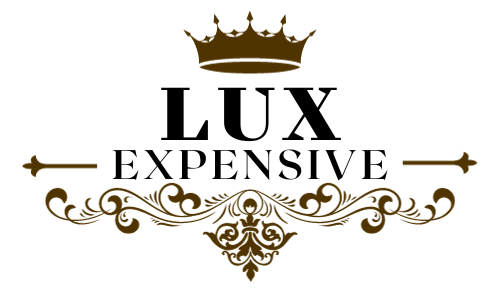ASICS shoes are expensive because they uses premium materials, loaded technology, and high-quality construction to deliver a high-performance athletic shoe. Their niche focus, brand image, innovations, and manufacturing processes all contribute to a superior shoe that justifies the higher price tag.
ASICS is one of the most popular and respected athletic shoe brands in the world. ASICS stands for “Anima Sana In Corpore Sano”, which is Latin for “A Sound Mind in a Sound Body”.
The company was founded in 1949 by Kihachiro Onitsuka and has grown into a global leader in performance athletic footwear and apparel.
Top 10 Reasons Why ASICS Shoes Are Expensive
1. Premium Materials
ASICS uses only the highest quality materials in their shoes like FlyteFoam technology, Gel cushioning systems, and DuoMax Support systems. Many of their shoes feature lightweight breathable mesh uppers.
The materials they use are more expensive than cheaper synthetics, but provide better comfort, support, and durability. The premium materials definitely contribute to the higher cost.
2. Advanced Technology
In addition to premium materials, ASICS loads their shoes with the latest advancements in shoe technology. This includes their proprietary Gel cushioning, exoskeletal heel counters, and special foam midsoles.
Developing and implementing these technologies adds to the cost of production. But ASICS prides itself on being an innovative performance brand, so the extra cost is worth it to them. The tech makes the shoes perform and feel better.
3. High-Quality Construction
ASICS employs master craftsmen who meticulously construct each shoe. They use specially engineered meshes, durable overlays, and anatomically correct footbeds. Small details like reinforced eyestays and stitched-down toe bumpers demonstrate quality construction.
Less expensive shoes often cut corners in how the shoes are put together. The attention to detail and craftsmanship ASICS puts into constructing their shoes adds to the price. But it also makes them last longer.
4. Made in Japan
Many ASICS shoe models are still produced in Japan, where the company originated. Manufacturing the shoes in Japan with skilled Japanese labor increases productions costs compared to outsourcing labor to countries with lower wages.
However, “Made in Japan” means better quality control oversight. Producing shoes in Japan allows ASICS to more closely monitor production and meet their high-quality standards. So while Made in Japan raises costs, it also raises quality.
5. Signature Technology
ASICS is known for their proprietary signature technologies like Gel cushioning, DuoMax support, Impact Guidance System (IGS), and AHAR rubber outsoles. These technologies took years to develop and perfect.
ASICS invests heavily in constant research and development to keep improving their shoe technologies. These types of signature technologies set ASICS apart from cheaper brands.
The costs invested in developing them get passed onto the consumer. But customers keep coming back because the tech works.
6. Athletic Focus
ASICS centers their entire business around athletic performance and making the highest quality athletic shoes, gear, and apparel. They don’t divide their focus making lifestyle shoes or outdoor shoes.
The athletic specialty focus requires significant investment and adds costs versus a more diversified business model. But ASICS would argue the athletic focus results in better performing shoes for the intended activity or sport, providing superior value.
7. Celebrity Endorsements & Elite Sponsorships
ASICS spends millions sponsoring high-profile celebrity athletes and elite sporting events. Sponsoring big name athletes like tennis star Novak Djokovic and race car driver Daniel Ricciardo is expensive.
Supplying shoes for marathons and major tennis tournaments also costs big marketing dollars. These big endorsements and sponsorships raise brand prestige and awareness.
But the cost of these sponsorships gets incorporated into the prices paid by consumers. For ASICS, it helps validate them as a performance brand.
8. Niche Markets
In addition to major sports like running and tennis, ASICS targets niche sports markets like wrestling, volleyball, cheerleading, and Pickleball. Developing shoes tailored specifically for these niche sports requires additional research, innovation, and marketing costs.
But dominating the niche markets provides halo effects to the overall ASICS brand. The costs associated with becoming the leading performance brand across both major and niche sports all contributes to the higher prices.
9. Premium Brand Image
ASICS has built a reputation and brand image centered around premium high-performance and quality. They don’t compete on price. They compete on providing the best running, tennis, or training shoes for the intended sport or activity.
ASICS maintains premium prices to reinforce that image of performance quality. Dropping prices could erode their hard-earned reputation. Even during sales, ASICS prices rarely drop as low as less premium brands. The premium brand image helps justify the higher prices to customers.
10. Lower Production Volumes
Some mass market value brands can keep prices low by producing very high volumes to achieve economies of scale. ASICS produces lower volumes focused on specialty performance shoes.
Lower production volumes mean costs are spread across fewer shoes, increasing per unit costs. Additionally, ASICS manufactures far more sizes and widths per model to fit more foot types.
More sizes means smaller production runs per size, further increasing costs. The premium quality over quantity approach necessitates higher pricing.
